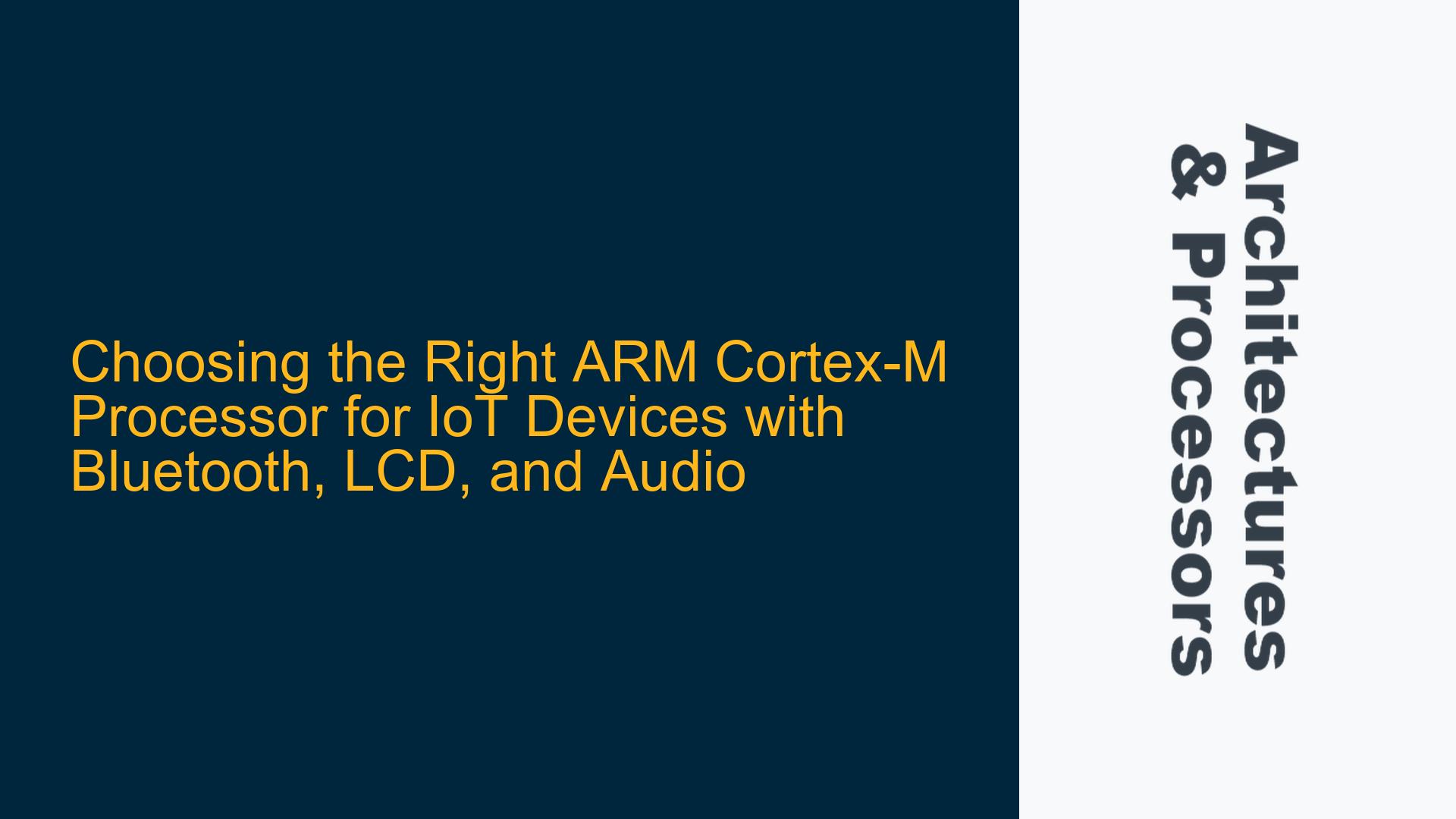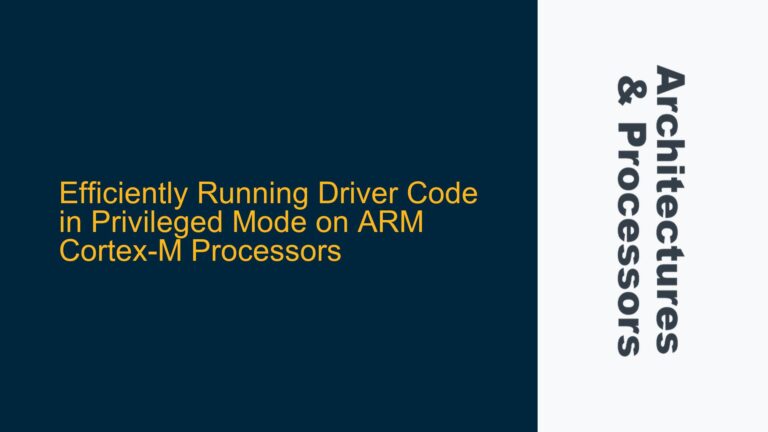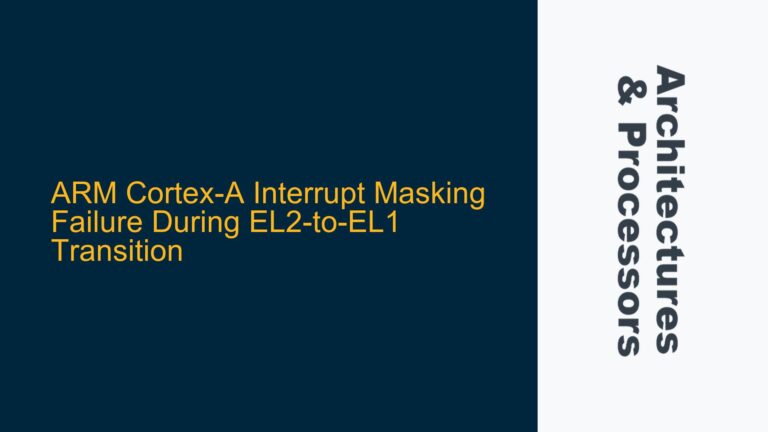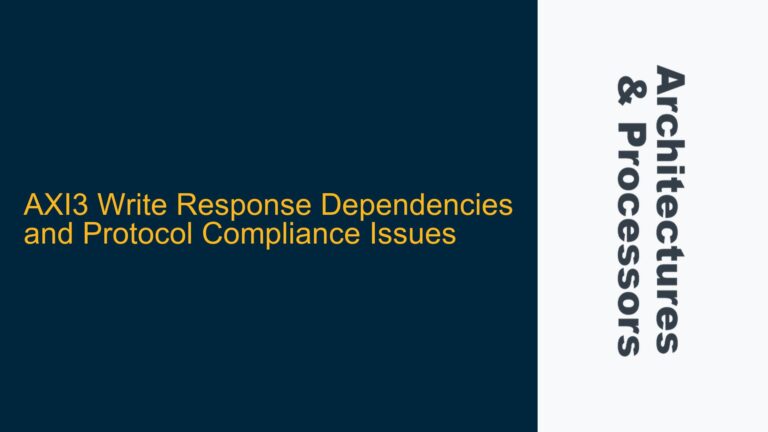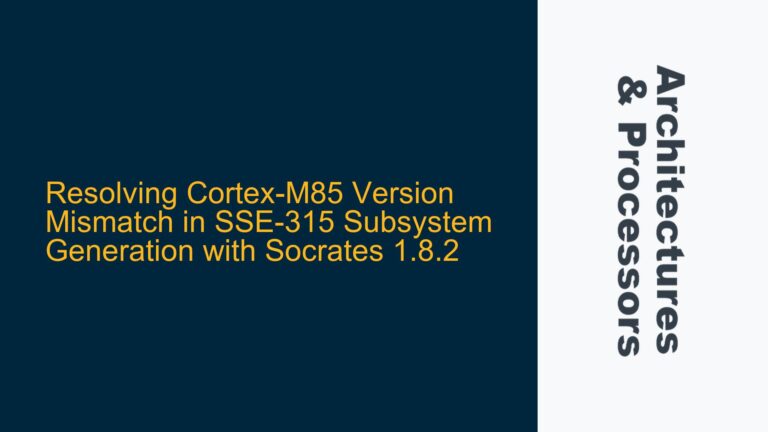ARM Cortex-M7 vs. Cortex-M0/M3: Balancing Performance and Power Efficiency for IoT Applications
When designing an IoT device that integrates functionalities such as capturing and transmitting images via Bluetooth, powering an LCD touchscreen, and playing audio files, selecting the appropriate ARM Cortex-M processor is critical. The Cortex-M series offers a range of processors tailored to different performance and power requirements, and understanding their capabilities is essential for optimizing your design.
The Cortex-M0 series is designed for ultra-low-power applications, making it ideal for simple, battery-operated devices. It excels in scenarios where power consumption is a primary concern, but its computational capabilities are limited compared to higher-end Cortex-M processors. The Cortex-M3, on the other hand, strikes a balance between power efficiency and performance, making it suitable for moderate-complexity IoT devices. It supports more advanced features such as nested vectored interrupt controllers (NVICs) and higher clock speeds, enabling it to handle tasks like basic Bluetooth communication and simple user interfaces.
The Cortex-M7, the most powerful in the M series, is designed for applications requiring significant computational power. It features a dual-issue superscalar pipeline, floating-point unit (FPU), and advanced memory interfaces, making it capable of handling complex tasks such as image processing, advanced audio algorithms, and high-resolution touchscreen displays. However, the Cortex-M7’s higher performance comes at the cost of increased power consumption and higher chip costs.
For the described project, which involves image capture, Bluetooth communication, LCD touchscreen control, and audio playback, the Cortex-M7 is likely the best choice. While it may seem overkill for some aspects of the project, its ability to handle multiple concurrent tasks efficiently ensures a smooth user experience. Additionally, the Cortex-M7’s advanced features provide headroom for future enhancements, such as adding more complex algorithms or supporting higher-resolution displays.
Pin Configuration Challenges and Naming Conventions in ARM Cortex-M Processors
One of the common challenges faced by developers new to ARM Cortex-M processors is understanding the pin configurations and naming conventions. ARM processors, including the Cortex-M series, often have a large number of pins with varying functionalities, and deciphering their roles can be daunting.
In ARM Cortex-M processors, pins are typically multiplexed, meaning they can serve multiple functions depending on the configuration. For example, a single pin might be configurable as a GPIO (General-Purpose Input/Output), UART (Universal Asynchronous Receiver/Transmitter) transmit line, or I2C (Inter-Integrated Circuit) clock line. The specific functions available for each pin are detailed in the processor’s datasheet and reference manual.
While the pin names and functionalities are not entirely static across different Cortex-M processors, there are some common conventions. For instance, UART communication typically involves pins labeled TX (Transmit) and RX (Receive), while I2C communication uses SDA (Serial Data) and SCL (Serial Clock) pins. These naming conventions are generally consistent across the Cortex-M family, but the specific pin numbers and alternate functions may vary.
To simplify pin configuration, tools like STM32CubeMX can be invaluable. STM32CubeMX provides a graphical interface for configuring pins and peripherals, generating initialization code, and visualizing the pinout of the selected processor. By using such tools, developers can avoid manual configuration errors and ensure that the pins are correctly assigned to their intended functions.
Ensuring Compatibility Between ARM Cortex-M Processors and Peripheral Chips
Another critical aspect of designing an ARM-based IoT device is ensuring compatibility between the Cortex-M processor and peripheral chips, such as Bluetooth modules, LCD controllers, and audio codecs. Compatibility issues can arise from differences in voltage levels, communication protocols, and timing requirements.
When selecting a Bluetooth module, for example, it is essential to verify that it supports the same communication protocols (e.g., UART, SPI, or I2C) as the Cortex-M processor. Additionally, the voltage levels of the Bluetooth module’s interface pins must match those of the processor. Most Cortex-M processors operate at 3.3V, but some peripherals may require 5V or lower voltages, necessitating level-shifting circuitry.
To determine compatibility, developers should carefully review the datasheets and reference manuals of both the Cortex-M processor and the peripheral chips. Key parameters to check include the supported communication protocols, voltage levels, and timing requirements. Additionally, many manufacturers provide application notes and reference designs that demonstrate how to interface their peripherals with specific Cortex-M processors.
For Bluetooth modules, it is also important to consider the software stack and drivers required for communication. Some modules come with pre-integrated software stacks, while others may require custom development. Ensuring that the necessary software components are available and compatible with the chosen Cortex-M processor is crucial for a successful implementation.
Optimizing Power Consumption in ARM Cortex-M-Based IoT Devices
Power efficiency is a critical consideration in IoT devices, particularly those powered by batteries. While the Cortex-M7 offers superior performance, its higher power consumption can be a concern in power-constrained applications. To optimize power consumption, developers can employ several strategies.
One approach is to leverage the Cortex-M7’s power management features, such as sleep modes and dynamic voltage and frequency scaling (DVFS). Sleep modes allow the processor to enter low-power states when idle, significantly reducing power consumption. DVFS enables the processor to adjust its operating voltage and frequency based on the workload, further optimizing power usage.
Another strategy is to offload tasks to dedicated peripherals or co-processors. For example, instead of using the Cortex-M7 for audio processing, a dedicated audio codec with its own DSP (Digital Signal Processor) can handle the task, allowing the Cortex-M7 to remain in a low-power state. Similarly, using a Bluetooth module with an integrated controller can reduce the processing burden on the Cortex-M7.
Finally, careful design of the power supply circuitry can also contribute to power efficiency. Using low-dropout regulators (LDOs) or switching regulators with high efficiency can minimize power losses and extend battery life.
Debugging and Testing ARM Cortex-M-Based IoT Devices
Debugging and testing are essential steps in the development of ARM Cortex-M-based IoT devices. Given the complexity of integrating multiple peripherals and ensuring reliable operation, a systematic approach to debugging is necessary.
One common issue in ARM Cortex-M development is incorrect pin configuration, which can lead to communication failures or peripheral malfunctions. To diagnose such issues, developers can use debugging tools such as JTAG (Joint Test Action Group) or SWD (Serial Wire Debug) interfaces. These interfaces allow real-time monitoring of the processor’s registers, memory, and peripheral states, enabling developers to identify and resolve configuration errors.
Another potential issue is timing-related problems, particularly in communication protocols like UART, SPI, and I2C. Incorrect baud rates, clock speeds, or timing delays can cause data corruption or communication failures. Using oscilloscopes or logic analyzers to capture and analyze signal waveforms can help identify timing issues and ensure that the communication parameters are correctly configured.
For more complex issues, such as intermittent faults or performance bottlenecks, advanced debugging techniques may be required. These include using trace debugging to capture detailed execution traces or employing performance profiling tools to identify and optimize resource-intensive code sections.
Best Practices for ARM Cortex-M Development
To ensure a smooth development process and a successful implementation, developers should adhere to several best practices when working with ARM Cortex-M processors.
First, thorough planning and documentation are essential. Before starting the design, developers should create a detailed specification outlining the required functionalities, performance requirements, and power constraints. This specification serves as a reference throughout the development process and helps ensure that all requirements are met.
Second, leveraging development tools and resources can significantly streamline the development process. Tools like STM32CubeMX, Keil MDK, and IAR Embedded Workbench provide integrated development environments (IDEs) with features such as code generation, debugging, and performance analysis. Additionally, ARM’s extensive documentation, application notes, and community forums are valuable resources for troubleshooting and learning.
Third, adopting a modular design approach can simplify development and testing. By breaking down the system into functional modules (e.g., Bluetooth communication, LCD control, audio playback), developers can develop and test each module independently before integrating them into the final system. This approach reduces the complexity of debugging and makes it easier to identify and resolve issues.
Finally, rigorous testing and validation are crucial for ensuring the reliability and performance of the final product. Developers should conduct comprehensive testing, including functional testing, stress testing, and power consumption testing, to identify and address any issues before deployment.
Conclusion
Designing an IoT device with an ARM Cortex-M processor involves careful consideration of performance, power efficiency, pin configuration, and peripheral compatibility. By selecting the appropriate Cortex-M processor, leveraging development tools, and adhering to best practices, developers can create robust and efficient IoT devices that meet their design requirements. Whether choosing the Cortex-M7 for its computational power or optimizing power consumption with the Cortex-M0, understanding the strengths and limitations of each processor is key to a successful implementation.
